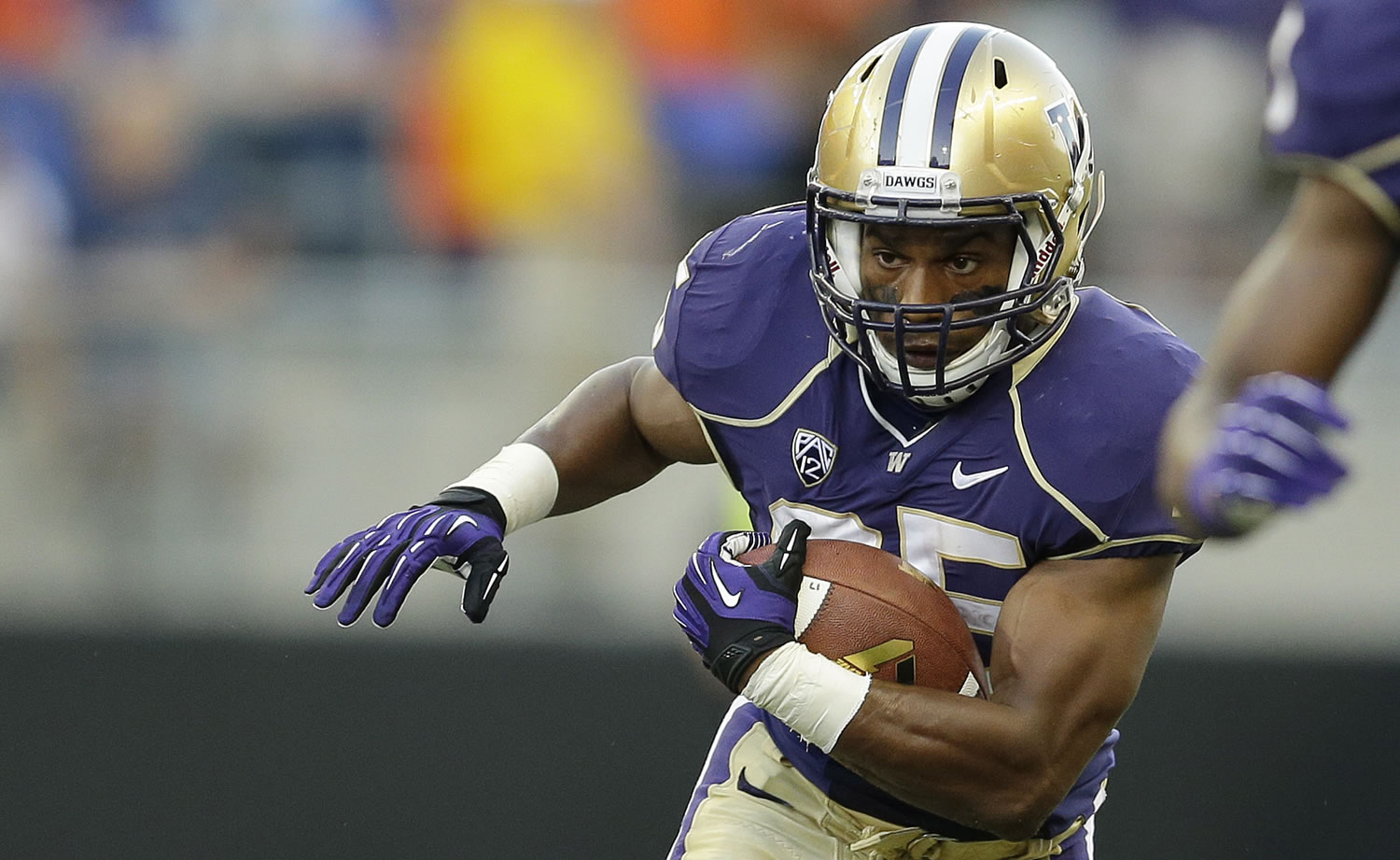SEATTLE — If Bishop Sankey keeps churning out yards like he did in his first two games of the season, the quiet ball carrier for No. 17 Washington will no longer be a secret tucked away in the Pacific Northwest.
Through two games, the junior running back is the NCAA Football Bowl Subdivision leader in yards rushing a game, averaging 184.5. That may be surprising considering all the yards Washington has posted thanks to its new no-huddle offense.
But much of Washington’s offensive success so far is predicated on Sankey’s running.
“He’s not very flashy, but he gets the job done,” Washington quarterback Keith Price said. “You’d probably look at him and think, ‘There is no way this guy is tearing us apart.’ He’s very patient. He’s got good vision, great balance for a guy his stature and I mean, he just makes plays.”
Sankey started the season with 161 yards and two touchdowns in the Huskies’ season opener against Boise State, then followed up last Saturday with a career-best 208 yards on 35 carries in Washington’s 34-24 win over Illinois. The 208 yards bettered the 205 he ran for in last December’s Las Vegas Bowl against Boise State.
Washington’s run game is working with such efficiency so far that coach Steve Sarkisian was able to start the second half against Illinois calling the same run play seven times. Sankey carried five times — with Jesse Callier getting the other two carries — and all seven plays went through different gaps along the line of scrimmage.
And they all worked. Washington went 75 yards in less than 2 minutes, capped by Sankey’s 1-yard TD run.
“I think that’s a sign of a good runner, to understand the run and the blocking schemes and being patient and accelerating through the holes when they’re there,” Sarkisian said. “And then he’s got a unique feel; he doesn’t take very many head-on type hits. He’s kind of slippery and slides and ducks and gets under tacklers. He’s a really good player. I’m not surprised by what he’s doing right now.”
While Washington has put up some dizzying offensive numbers through two games thanks to its new offense — numbers only likely to increase facing FCS Idaho State this weekend — the Huskies remain a team that’s focused on the run first.
Washington has 104 running attempts versus 66 pass attempts in two games and the yardage is fairly equal — 541 running, 666 passing. It’s the kind of balance Sarkisian wants to have, even if the notion remains that because a former quarterback is in charge, the Huskies are a pass-heavy team.
“I know people try and label me as someone who just wants to throw the ball,” Sarkisian said. “Our running numbers last year and even into this year, we run the ball about 60 percent of the time, which is about where we want to be.”
Sankey might not have been getting this type of opportunity at all. He was originally a verbal commitment to Washington State before changing his mind and committing to the Huskies. He wasn’t even supposed to be a starter when 2012 began, expected to play in rotation with Callier. But that was before Callier went down with a torn ACL in the season opener and the rushing load fell to Sankey.
His response turned out to be the third-best single-season rushing performance in Washington history, finishing with 1,439 yards and 16 touchdowns. If he can continue the pace he’s currently on to start this season, Sankey could challenge Corey Dillon’s school record of 1,695 yards rushing set in 1996. Dillon is the only Washington running back to eclipse the 1,500-yard mark in a single season.
Sankey has become a more patient runner during his time at Washington. When he arrived, he was always trying to run as quickly as he could into the gap where the play was supposed to go and was not always using his vision. Now, with the Huskies going no-huddle and pushing the game horizontally as much as vertically, the running lanes are becoming even larger.
“I think it helps just as the game goes on the defense gets worn out and holes will start to open up that weren’t there before and sometimes guys will jump to the wrong gaps,” Sankey said. “I think it’s helped out a lot.”



